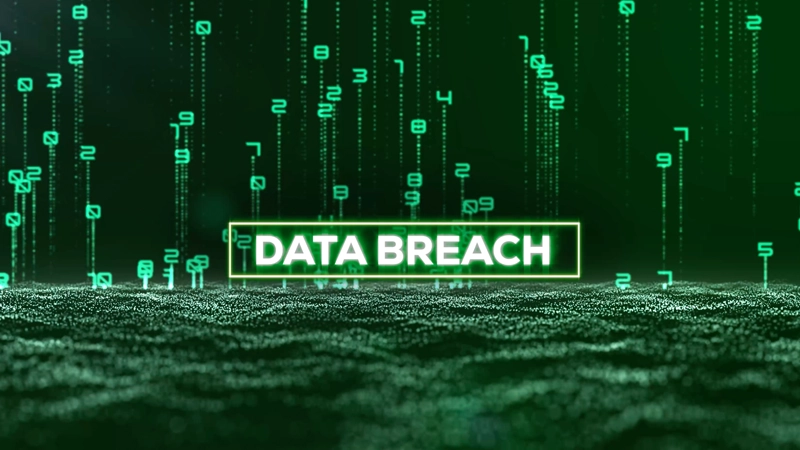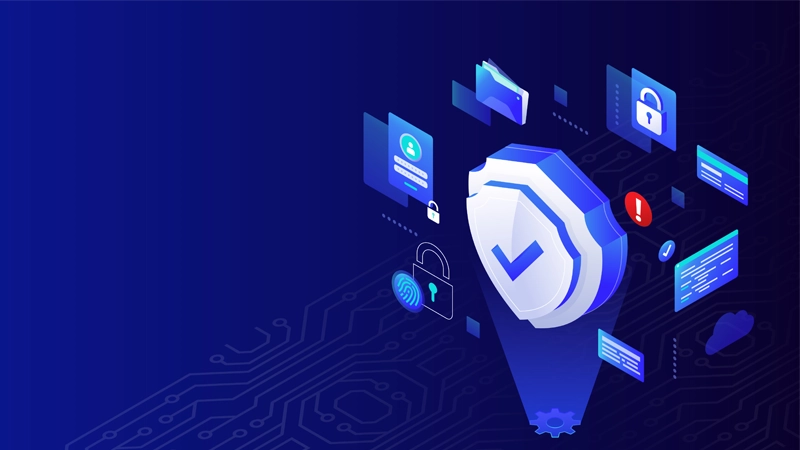PCI DSS 4.0 Compliance: Safeguarding the Future of Payment Security

Facing a March 2024 deadline, the introduction of PCI DSS 4.0 is a critical development in the realm of payment data security, arriving at a pivotal time to address evolving threats and bolster the defenses of global payment systems. Securing payment data has never been more paramount in an era where digital transactions are widespread. This article explores the significance of achieving PCI DSS 4.0 compliance, highlights pressing security concerns, and offers a strategic roadmap to navigate the compliance process effectively.
The Landscape of Payment Data Security
Recent reports highlight a surge in payment data breaches, underscoring a global concern for businesses and consumers. The complexity of digital transactions and the sophistication of cyber threats have made payment data security a paramount issue. The forthcoming PCI DSS 4.0 standards are designed to mitigate these risks, introducing robust requirements that reflect the latest security best practices.
Understanding PCI DSS 4.0
PCI DSS 4.0 is not merely an update but a comprehensive overhaul to enhance the security framework for card payments. With a phased approach to compliance, the first phase emphasizes planning and assessment, setting the stage for more technical implementations to follow. This strategic overview is a foundation for organizations to align their operations with the new standards.
Comprehensive Compliance Roadmap: Mastering PCI DSS 4.0 Standards
Determining Your Merchant Level
The journey to PCI DSS 4.0 compliance begins with clearly understanding your organization’s merchant level. This classification is pivotal, as it directly influences the compliance requirements you must adhere to. Merchant levels are primarily determined based on the volume of transactions processed annually, with Level 1 merchants—those processing over 6 million transactions per year—subject to the most stringent audits. These audits are conducted by external Qualified Security Assessors (QSAs) or Internal Security Assessors (ISAs) and culminate in an Attestation of Compliance (AOC). For merchants at lower levels, the path to compliance may involve completing Self-Assessment Questionnaires (SAQs), which demand a thorough understanding of your transaction volume and operational scope. Recognizing your merchant level is not just a procedural step; it’s a foundational aspect of your compliance strategy, guiding you toward the appropriate measures for securing your payment environment.
Scoping Your Cardholder Data Environment (CDE)
Defining the boundaries of your Cardholder Data Environment (CDE) is a critical step that requires meticulous attention to detail. This process involves mapping out every network segment, system, and process that handles, processes, stores, or transmits cardholder data. The goal is to comprehensively understand where sensitive payment information resides and travels within your organization. By accurately scoping your CDE, you can apply security measures more effectively, focusing your efforts on areas that directly impact the protection of payment data. This targeted approach enhances security and optimizes resource allocation, ensuring that compliance efforts are efficient and effective.
Conducting a Gap Assessment for Compliance Readiness
A gap assessment is an indispensable tool for gauging your current state of compliance and pinpointing areas that require enhancement. This thorough evaluation compares your existing security controls against the stringent requirements of PCI DSS 4.0, identifying discrepancies and areas of vulnerability. The insights gained from a gap assessment enable you to prioritize your compliance activities, focusing on areas that need immediate attention. Moreover, this process aids in strategically allocating resources, ensuring that your efforts are directed towards making the most significant impact on your compliance posture and overall security.
Leveraging Third-Party Expertise
The complexities of PCI DSS 4.0 compliance often necessitate the involvement of external experts. Qualified Security Assessors (QSAs) and Approved Scanning Vendors (ASVs) bring expertise and insight that can be invaluable in navigating the compliance landscape. These third-party service providers offer specialized knowledge in assessing vulnerabilities, conducting audits, and validating compliance efforts. Engaging with these experts not only helps ensure that your compliance measures meet the required standards but also provides clarity in defining roles and responsibilities within your organization. This collaborative approach facilitates a more effective and streamlined path to compliance, leveraging external expertise to bolster security measures.
Budgeting and Allocating Resources for Compliance
Achieving and maintaining compliance with PCI DSS 4.0 is a significant undertaking that requires careful financial planning and resource management. Preparing a comprehensive budget is essential, allowing you to allocate funds towards critical areas such as technology upgrades, external audits, and staff training. This financial planning must be supported by executive buy-in, ensuring the necessary resources are available to meet compliance objectives. Additionally, allocating human resources—assigning responsibilities to internal teams or outsourcing specific tasks to third-party providers—is critical to your compliance strategy. Effective budgeting and resource allocation are fundamental to achieving compliance and sustaining it over time, ensuring that your organization remains vigilant and responsive to the evolving payment security landscape.
By following these detailed steps, organizations can confidently navigate the complexities of PCI DSS 4.0 compliance, ensuring a secure and resilient payment environment that protects consumer data and business integrity.
Addressing Payment Data Security Concerns
The introduction of PCI DSS 4.0 is a proactive measure against the increasing global concerns over payment data security, designed to address the vulnerabilities that have led to significant data breaches. This update brings stringent requirements to enhance the security measures around digital transactions, ensuring organizations can protect sensitive payment information more effectively. By implementing these standards, businesses comply with regulatory mandates and significantly bolster their defenses against fraud and unauthorized data access.
Adopting PCI DSS 4.0 standards signifies a commitment to a robust security culture, emphasizing continuous improvement and vigilance against evolving cyber threats. This shift is essential for maintaining the integrity of payment systems, building consumer trust, and facilitating secure global commerce in the digital landscape. Through enhanced protocols for encryption, access control, and data protection, PCI DSS 4.0 equips organizations with the tools necessary to safeguard against current and future security challenges.
How PKWARE Addresses PCI DSS 4.0 Compliance
PKWARE’s PK Protect is a comprehensive data security solution designed to help enterprises leverage their data while minimizing the risk of exposure and ensuring compliance with various data handling regulations, including PCI DSS 4.0. PK Protect streamlines the compliance process through a series of well-defined steps, making it an essential tool for organizations aiming to meet the stringent requirements of PCI DSS 4.0. Here’s how PKWARE facilitates compliance:
Define a Policy
PK Protect allows organizations to create policies identifying sensitive data types relevant to regulatory compliance, including credit card numbers crucial for PCI DSS 4.0. With pre-built data types and the ability to add custom data types, PK Protect ensures that all relevant data is accounted for in compliance efforts.
Detect
The solution locates and identifies sensitive data across various repositories, including big data platforms and traditional databases. This detection capability is critical for PCI DSS 4.0 compliance, ensuring that all sensitive data, especially payment information, is accurately identified and protected.
Mask/Encrypt
PK Protect offers the ability to replace sensitive data with fictitious content or encrypt it, restricting access to authorized users only. This feature is particularly relevant for PCI DSS 4.0, which requires protecting cardholder data through encryption or other means to prevent unauthorized access.
Verify
The solution provides tools for reviewing secured sensitive data and user actions, including discovery, masking, and encryption results. Audit reports and dashboards offer insights into the compliance status, helping organizations verify their adherence to PCI DSS 4.0 requirements.
PK Protect’s operation across various data stores, including DBMS, file stores, Hadoop, and cloud environments, ensures comprehensive coverage and protection of sensitive data. By identifying, masking, or encrypting sensitive information across these platforms, PK Protect addresses the critical aspects of PCI DSS 4.0 compliance, from data discovery to protection and verification.
Summary
In summary, PKWARE’s PK Protect equips organizations with the tools to achieve and maintain compliance with PCI DSS 4.0, safeguarding sensitive payment information against exposure and aligning with regulatory standards.
The upcoming changes in PCI DSS 4.0 aim to protect all sensitive payment card information from data breaches and theft, emphasizing the prevention of fraud through its implementation. As organizations prepare to comply with these changes, it is evident that the evolving landscape of payment security demands a proactive and robust approach to safeguarding sensitive data. The significance of PCI DSS 4.0 compliance in addressing emerging threats and reinforcing the defenses of global payment systems cannot be overstated. By prioritizing adherence to these standards, organizations can significantly enhance their security measures and contribute to the preservation of trust and integrity in digital transactions.
Top 5 Key Takeaways
Don’t miss this opportunity to enhance your organization’s security posture.
In this insightful session, experts gather to discuss key topics, including:
- The inevitability of cyberattacks and the importance of being prepared.
- Strategies for rapid recovery following a breach.
- Planning and preparing for future breach attempts.












